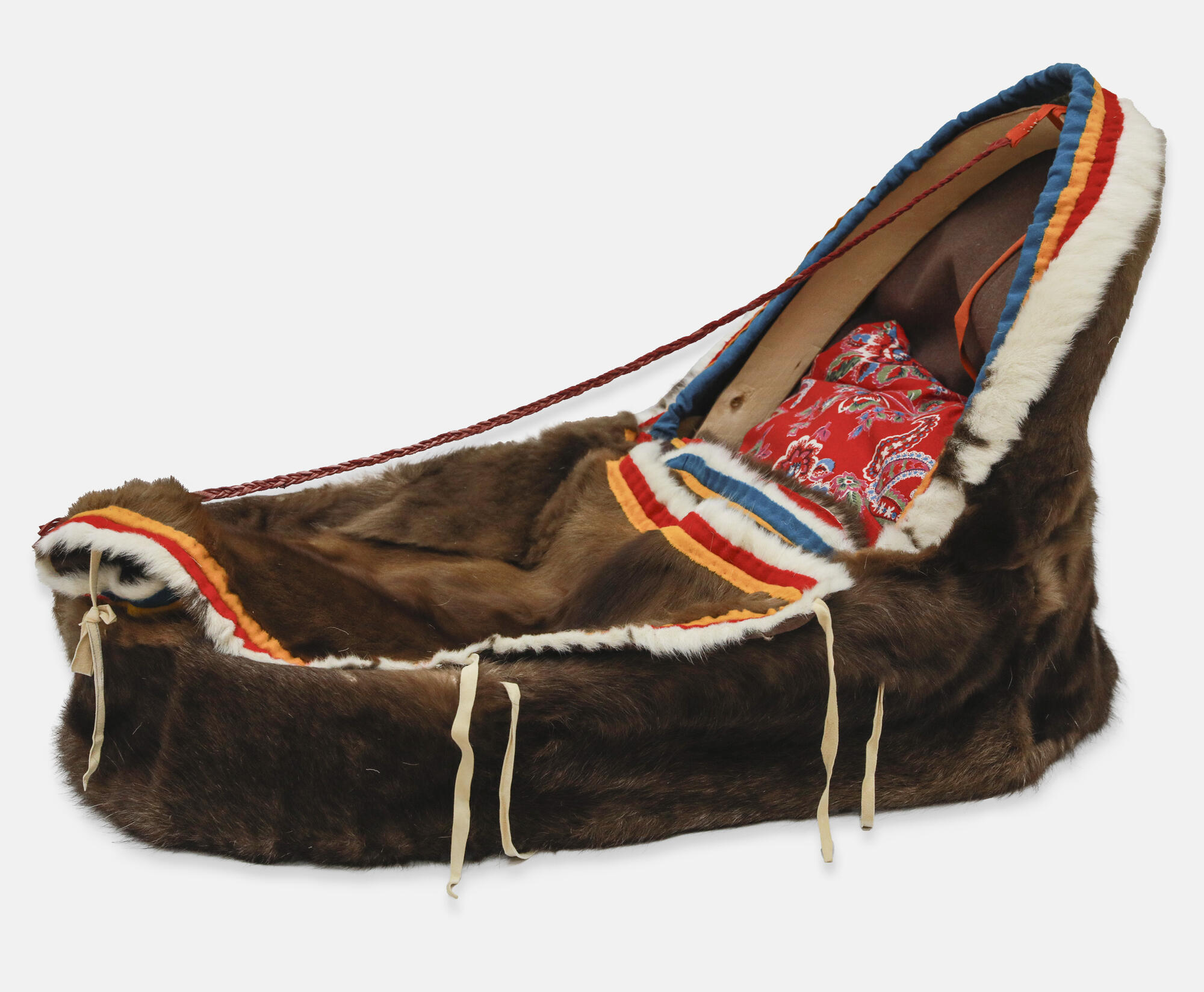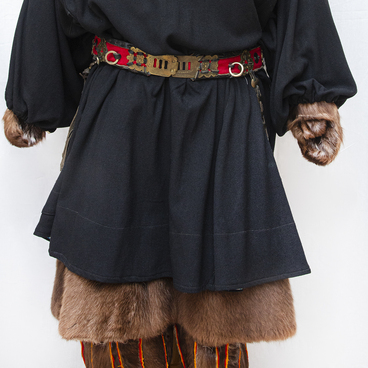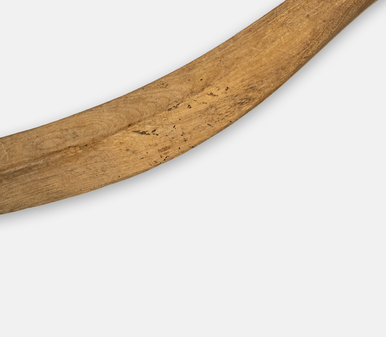A cradle is a child’s first home, bed, and shelter. Some northern peoples had two types of cradles: one for lying in a semi-sitting position during the day and the other for sleeping during the night. The Nenets, on the other hand, used one cradle designed for all purposes. The Nenets cradle is wooden, oval, equipped with strong sides, a flat bottom, and an arc at the top.
The cradle is made of pine: the bottom can be made of three transverse boards, and the side walls — of two curved boards. The parts of the cradle are fastened with straps made of rovduga — deer suede — passed through special holes. Closer to the top of the cradle, there is a wooden hoop for fastening a canopy, which protects the baby from light, wind, snow, and insects. Design-wise this type of cradle is similar to the Russian “zybka”. On the sides, there are two loops for hanging the cradle on the pole of the chum — a northern dwelling. As a result, family members can rock the cradle without getting up, using a rope.
Six pairs of suede loops are attached to the bottom of the cradle on the inside, with metal rings tied to them for both decorative and sacral purposes. The child is secured inside with three pairs of straps. If the baby is sleeping outside, the straps prevent it from falling out of the cradle and freezing its hands. The cradle should also be equipped with amulets as the Nenets believe that a toothless baby cannot protect itself from evil forces. The cradle is decorated with colorful pieces of cloth which symbolize new life.
Before the advent of diapers, the Nenets used a
special envelope filled with small, well-dried birch dust and covered with
reindeer skin. The wet birch dust is brought outside to the “child’s place”
under the tree. According to the Nenets, in winter a crow tramples on this pile
and says,




